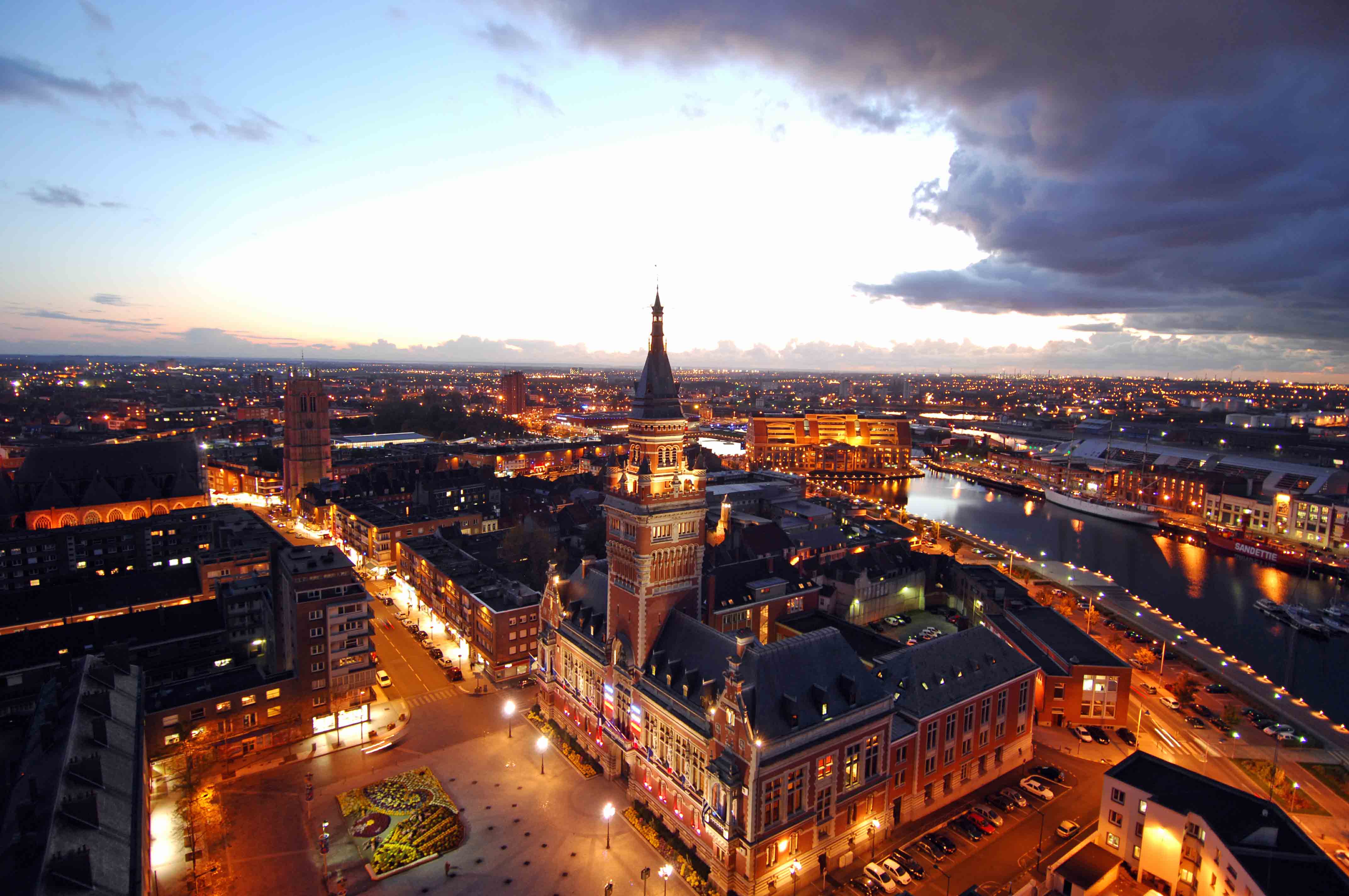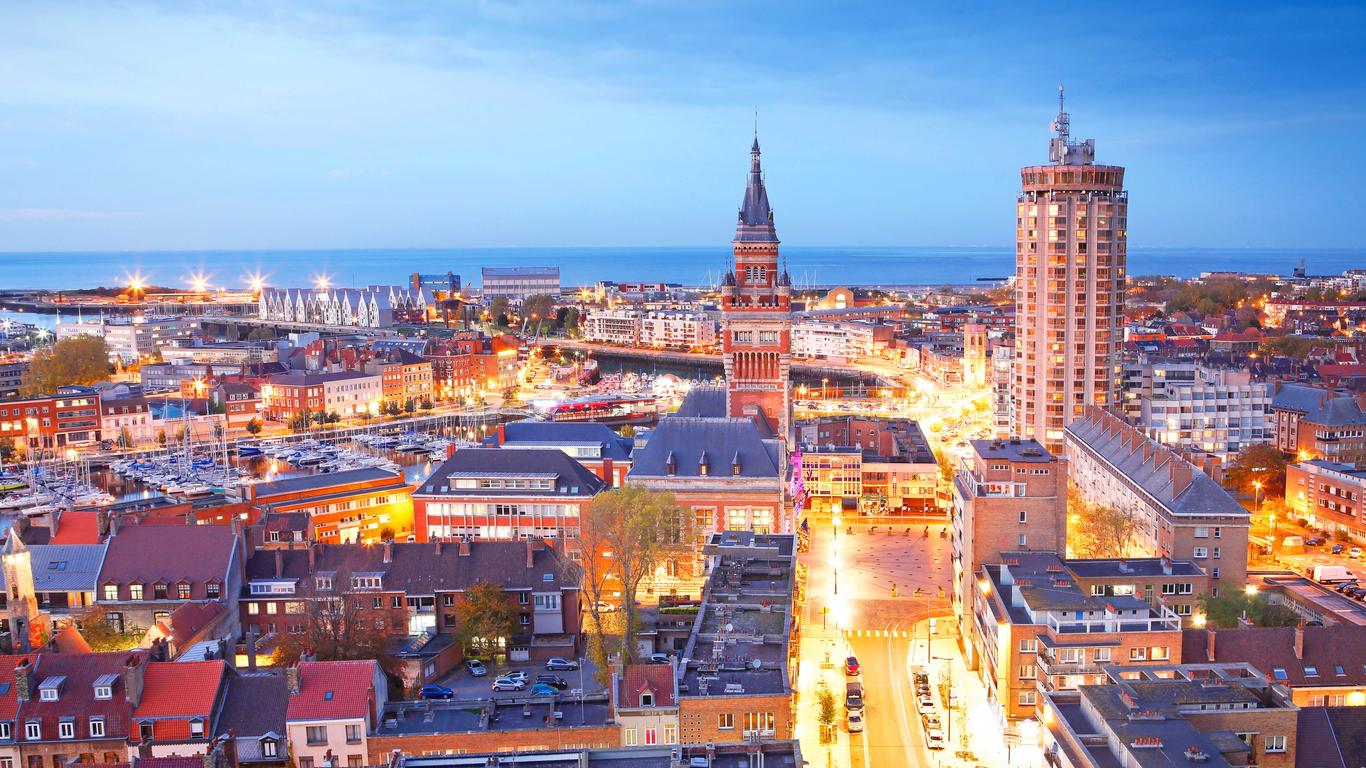



Dunkirk is a coastal city in northern France. The Dunkirk 1940 Museum documents Operation Dynamo, the WWII evacuation of Allied soldiers from the city's beaches. The waterside Musée Portuaire (Port Museum) has historic ships, including the Duchesse Anne, a 3-masted sailing ship built in 1901. The striking LAAC is a contemporary art museum with a sculpture garden. Resorts line the soft sands of Malo-les-Bains beach.
Best time to visit Dunkirk: The best time to visit Dunkirk is between late spring and early fall, from May to September. During this period, the weather is mild, and there are various festivals and events, including the Dunkirk Carnival in February and the Dunkirk International Film Festival in September.
How to get there:
Top Attractions in Dunkirk:
Activities to Do in Dunkirk:
Accommodation:
Food and Restaurants in Dunkirk:
Moules-Frites: Dunkirk is famous for this classic Belgian-French dish of mussels served with crispy fries. Several restaurants, especially along the beach, offer delicious versions of this dish.
Carbonnade Flamande: A hearty Flemish-style beef stew cooked with beer, onions, and spices. This dish is a regional favorite and can be found at many local bistros.
Dunkirk Pâté: A local delicacy made from minced pork, veal, and spices, traditionally served in pastry.
Seafood: Dunkirk’s proximity to the coast makes it an ideal place to try fresh seafood, including oysters, scallops, and fish dishes. The local fish market is a great place to sample the freshest offerings.
Top Restaurants:
Le Grand Large: Known for its exceptional seafood and beautiful views of the beach, it's a great place for both lunch and dinner.
L'Auberge du Marché: A charming bistro that serves traditional French and Flemish dishes, with a focus on regional specialties like carbonnade flamande.
La Dune Gourmande: Located by the beach, this restaurant offers a great selection of seafood and local dishes, paired with a relaxed atmosphere.
Le Comptoir des Dunes: For those looking to enjoy local, high-quality cuisine, this stylish restaurant serves delicious French dishes and seafood.
Brasserie La Chope: A classic French brasserie offering a wide selection of regional specialties, including moules-frites and hearty stews.
Local Culture in Dunkirk:
Carnival of Dunkirk: One of the most famous events in the region, the Dunkirk Carnival takes place every winter, typically in February. The festival is known for its vibrant parades, elaborate costumes, music, and dance. It's a celebration of the town’s maritime heritage and community spirit.
Maritime Heritage: Dunkirk has a rich maritime history, and this is reflected in the city’s culture. You can explore its naval past at museums like the Port Museum or visit the historic Dunkirk Harbor.
Flemish Influence: Dunkirk has strong ties to both France and Belgium, evident in its architecture, cuisine, and dialect. This cross-cultural influence is reflected in the city's welcoming atmosphere and vibrant community life.
The Dunkirk Evacuation (Operation Dynamo): The city's history as the site of the dramatic Dunkirk evacuation during World War II is a key part of its identity. Visitors can learn about this through local museums, monuments, and the Dunkirk 1940 Museum.
Traditional Music and Dance: Dunkirk is home to traditional folk music, including maritime songs and the "Crapauds" (a type of traditional dance). Locals love to celebrate through song and dance, especially during festivals and special occasions.
Craftsmanship and Local Markets: Dunkirk hosts several local markets where you can purchase handmade crafts, local produce, and goods that reflect the region’s culture and traditions. The Dunkirk Christmas Market is especially known for its seasonal goods and festive atmosphere.